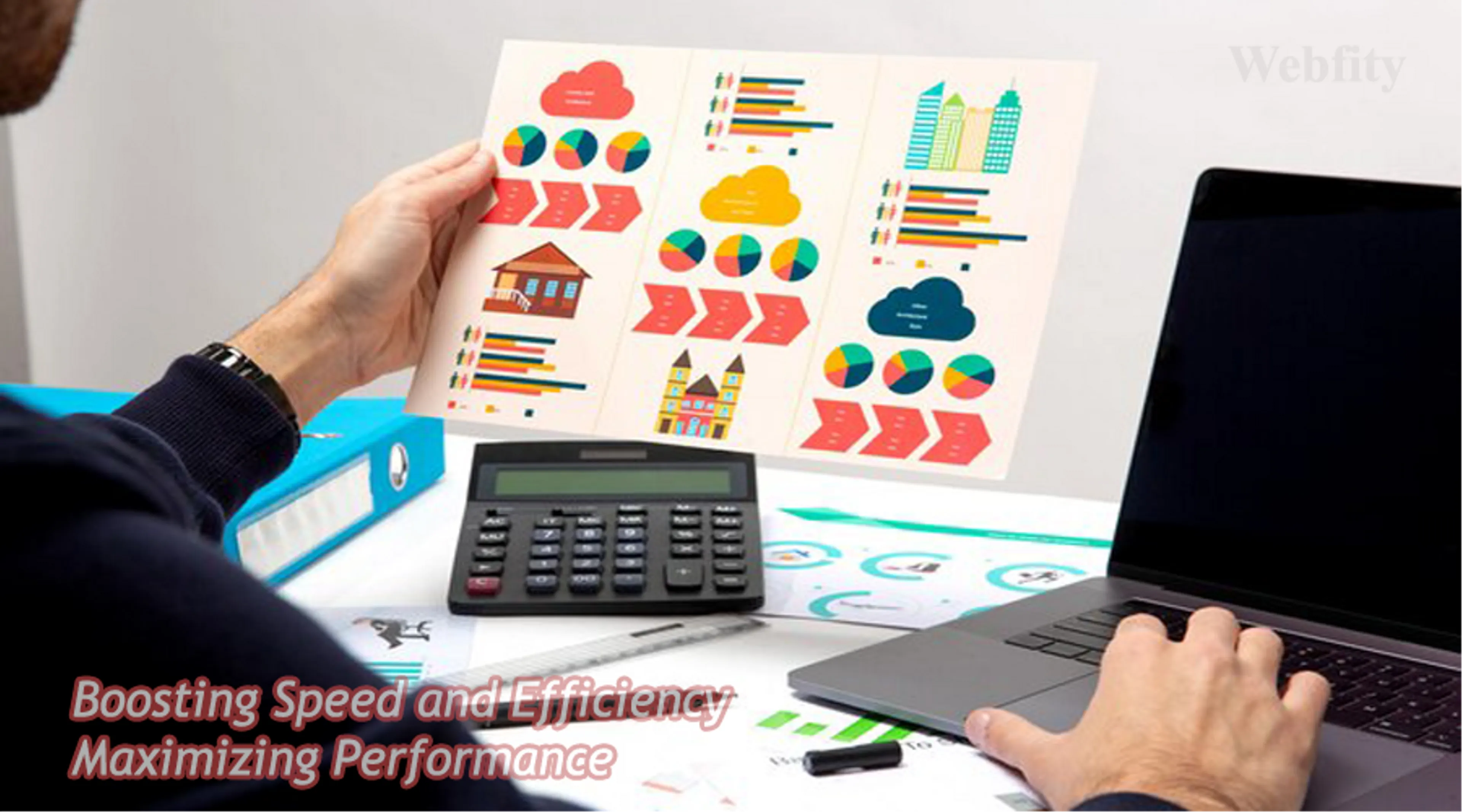Creating a website is easier than ever with free web builders that offer drag-and-drop features, templates, and plugins. However, having a website is not enough if you want to attract and retain visitors, increase conversions, and rank higher on search engines. You also need to optimize your website for speed and efficiency, as these factors can affect your site's performance and user experience.
Speed refers to how fast your website loads and responds to user interactions. Efficiency refers to how well your website uses the available resources and avoids unnecessary or redundant processes. Optimizing your website for speed and efficiency can help you:
- Improve your site's usability and accessibility, as visitors can access your content faster and easier, without waiting or encountering errors.
- Enhance your site's credibility and trustworthiness, as visitors can perceive your site as more professional and reliable, and less likely to harm their devices or data.
- Boost your site's SEO (search engine optimization), as search engines can crawl and index your site faster and easier, and reward your site with higher rankings and more visibility.
- Reduce your site's costs and environmental impact, as you can save bandwidth, storage space, energy consumption, and carbon emissions.
To help you optimize your website for speed and efficiency, here are some free web builder optimization strategies that you can implement:
Minify your code
One of the simplest ways to optimize your website for speed and efficiency is to minify your code. Minifying your code means removing any unnecessary or redundant characters or elements from your HTML, CSS, JavaScript, or other files that make up your website. These include:
- Whitespace: Spaces, tabs, line breaks, etc. that separate or format your code.
- Comments: Notes or explanations that you or other developers add to your code for reference or documentation purposes.
- Formatting: Indentation, alignment, spacing, etc. that make your code more readable or consistent.
- Unused code: Code that is no longer needed or used on your website.
Minifying your code can reduce the size of your files and the number of requests that your browser needs to make to load your website. This can improve your site's loading speed and efficiency, as well as prevent errors or conflicts that may arise from poorly written or formatted code.
To minify your code, you can use online tools such as HTMLMinifier, CSSNano, UglifyJS, etc. that can automatically compress and optimize your code for you. You can also use plugins or extensions that can minify your code on the fly, such as Autoptimize, WP Rocket, Minify HTML, etc.
See more: https://webfity.com/blog/website-features-you-need-to-have-in-2023
Optimize your images.
Another way to optimize your website for speed and efficiency is to optimize your images. Images are one of the most important elements of your website, as they can convey your message, showcase your products or services, or enhance your design. However, images are also one of the most heavy elements of your website, as they can take up a lot of space and bandwidth.
Optimizing your images means reducing their file size without compromising their quality or appearance. This can improve your site's loading speed and efficiency,
as well as save storage space and bandwidth costs. To optimizeyour images,you can use online tools suchas TinyPNG,Compress JPEG,ImageOptim,etc.that can automatically resizeand compressyour images foryou.

You can also use pluginsor extensions that can optimize your images on the fly, such as Smush, EWWW Image Optimizer, ShortPixel,etc. Some tips to optimize your images are:
- Choose the right format: Different image formats have different characteristics and advantages. For example, JPEG is suitable for photos or images with many colors
and gradients, PNG is suitable for logos or images with transparency or sharp edges, SVG is suitable for icons or images with simple shapes or text. You should choose the format that best suits your image's purpose and quality requirements.
- Choose the right resolution: The resolution of an image refers to the number of pixels or dots that make up an image.The higher the resolution,
the sharper and clearer the image, but also the larger the file size. You should choose the resolution that matches the display size of your image on your website,
and avoid using images that are too large or too small for their intended use.
- Choose the right compression: The compression of an image refers to the process of reducing the file size of an image by removing some of its data
or details. The higher the compression,the smaller the file size, but also the lower the quality or fidelity of the image. You should choose the compression level that balances the file size and quality of your image,and avoid over-compressing or under-compressing your image.
Enable caching.
A hird way to optimize your website for speed and efficiency is to enable caching. Caching means storing a copy of your website's files or data on the browser or server level, so that they don't have to be downloaded or generated every time a visitor requests them. This can improve your site's loading speed
and efficiency, as well as reduce server load and bandwidth consumption.To enable caching, you can use online tools such as PageSpeed Insights, GTmetrix, Pingdom,
etc. that can analyze your website's performance and provide recommendations on how to improve it.You can also use plugins or extensions that can enable caching on
the fly, such as W3 Total Cache, WP Super Cache, Cache Enabler, etc.
Some tips to enable caching are
- Set expiry dates: Expiry dates are instructions that tell browsers or servers how long they should keep a copy of a file or data before they need to update it. You should set expiry dates for files or data that don't change frequently or at all,such as images,CSS,Javascripts,favicon.ico etc.and avoid setting expiry dates for files or data that change often,such as dynamic content,user-generated content,database queries etc.

- Use browser caching: Browser caching means storing a copy of a file or data on the visitor's browser level.This can improve the loading speed and efficiency of subsequent visits,since the browser doesn't have to request the same file or data again from the server.You should use browser caching for files or data that are specific to each visitor,such as preferences,cart items,sessions etc.and avoid using browser caching for files or data that are shared by multiple visitors,such as public content,critical resources etc.
- Use server caching: Server caching means storing a copy of a file or data on the server level.This can improve the loading speed and efficiency of first-time visits,since the server doesn't have to generate the same file or data again from scratch.You should use server caching for files or data that are shared by multiple visitors,such as public content,critical resources etc.and avoid using server caching for files or data that are specific to each visitor,such as preferences,cart items,sessions etc.
Use a CDN (content delivery network)
A fourth way to optimize your website for speed and efficiency is to use a CDN (content delivery network). A CDN is a network of servers distributed across different locations around the world that store copies of your website's files or data,and deliver them to visitors based on their geographic proximity.This can improve your site's loading speed and efficiency,as well as enhance your site's security,reliability,and scalability.
To use a CDN,you can sign up for free or paid services such as Cloudflare,Akamai,Fastly,BunnyCDN etc.that can integrate with your web builder platform,and provide you with various features and benefits.You can also use plugins or extensions that can connect your website with a CDN service,such as Cloudflare Plugin,Akamai Plugin,Fastly Plugin,BunnyCDN Plugin etc.Some tips to use a CDN are:

- Choose the right CDN service: Different CDN services have different features,capabilities,and pricing.You should choose the CDN service that best suits
your website's needs,budget,and goals.For example,you should consider factors such as coverage,speed,cost,support,integration,ease-of-use etc.when choosing a CDN service.
- Choose the right CDN settings: Different CDN settings have different effects on how your website's files or data are delivered.You should choose the CDN settings that best optimize
your website's performance,user experience,and SEO.For example,you should consider factors such as compression,minification,caching,prefetching,purging etc.when configuring a CDN service.
- Monitor and analyze your CDN performance: You should regularly monitor and analyze how well your CDN service is working for
your website,and make adjustments if necessary.You should use tools such as Google Analytics,CrUX (Chrome User Experience Report),WebPageTest etc.to measure metrics such as load time,TTFB (time to first byte),FCP (first contentful paint),LCP (largest contentful paint),FID (first input delay),CLS (cumulative layout shift) etc.to evaluate how fast,easy,and smooth it is for visitors to access your content.
Conclusion
Optimizing your website for speed and efficiency is not only beneficial for you,but also for your visitors and search engines.By following these free web builder optimization strategies,you can create a website that loads faster,responses quicker,and performs better.This can help you improve user satisfaction,increase conversions,and rank higher.
Remember that speed and efficiency are critical factors in today's digital landscape. Users expect fast-loading websites, and search engines prioritize sites that offer a seamless browsing experience. By optimizing your website's performance, you not only enhance user satisfaction but also increase your chances of ranking higher in search engine results. Webfity free website builder with extremely fast page loading speed.
